We finished the previous post of our CRO blog series with a customer journey map template for retailers. Hopefully you’ve now created your own customer journey map (or revamped the one you already have). This will have helped you identify pain points and areas of friction that might be hindering your business from reaching its maximum conversion rate potential.
With your customer journey map in hand, it’s time to start eliminating those areas of friction.
In this edition of our CRO blog series, we’re focusing on product pages – an area of your website where friction can make the difference between carting a product or abandoning to a competitor.
Read on for 4 eCommerce product page best practices to eliminate friction and boost conversions.
1) Social proof
Social proof tactics such as reviews and ratings, testimonials and user generated content serve to ease any purchase anxiety your customer might have.
Far from being nice-to-haves, customers want you to include these tactics on your website. Over half (56%) of consumers look for star ratings when making a purchase decision. And one in three shoppers prefer to see a product as it is worn or used by real people as opposed to professional product images.
Here are four essential social proof tactics to include on your eCommerce product pages.
Ratings and reviews
Think back to your last online purchase. Did you purchase blindly without scrolling through the opinions of fellow shoppers or looking for the product’s star rating? In most cases, the answer is no. Without the ability to try products out before buying, we naturally seek the opinions of other shoppers, making customer reviews invaluable to online retailers.
Country Attire prominently displays star ratings on their product pages, soothing any last minute doubts by signalling to shoppers that this is a high quality, trustworthy product that won’t disappoint.
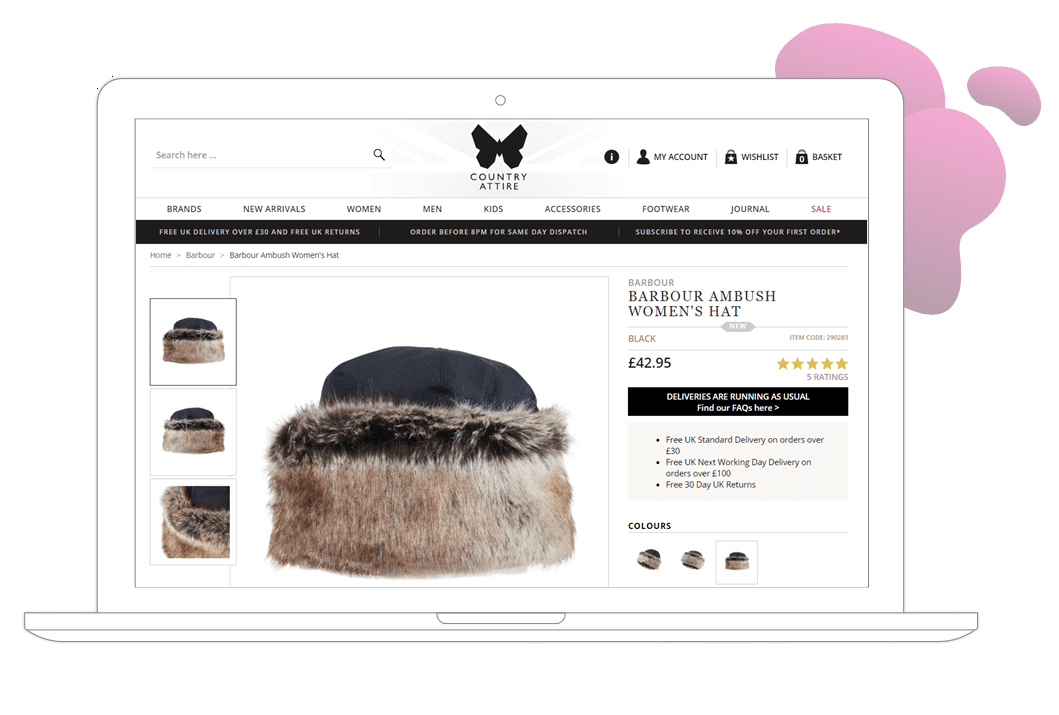
Source: countryattire.com
Popularity messaging
When shopping in-store, seeing a crowd of fellow shoppers flocking around a product we’re interested in usually serves to heighten our interest in that item. Popularity messaging is the eCommerce equivalent, helping us imagine how many other shoppers are virtually crowding around a particular product.
American Golf uses real-time browsing data to display how many other shoppers are looking at a particular product. This signals to shoppers that this is a product worth looking at, encouraging them to add the item to their cart.
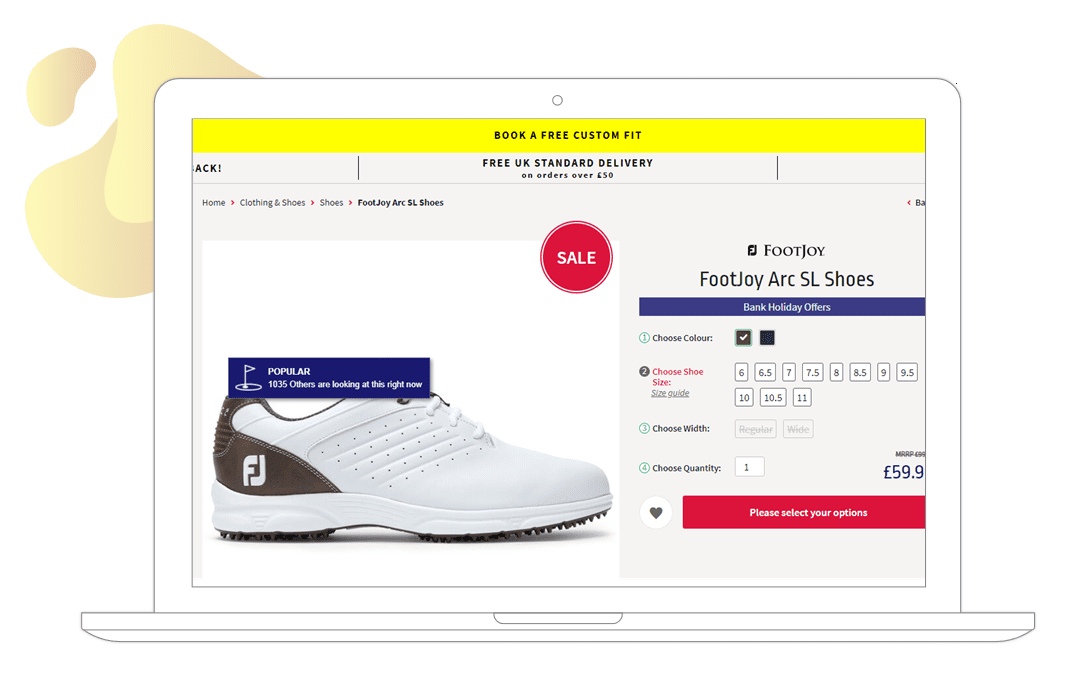
Source: americangolf.co.uk
Scarcity messaging
Similarly, knowing that a product is in short supply heightens our interest. In psychology, it’s known as the scarcity effect, described as the cognitive bias that makes us place a higher value on an object that is scarce and a lower value on one that is available in abundance. When used on product pages, scarcity messaging creates urgency and motivates shoppers to purchase quickly just in case they miss out.
The Scotch Malt Whiskey Society uses real-time data to display how many items of a particular product are left in stock. This encourages shoppers to add the product to their cart and check out quickly.

Source: smws.com
User generated content
User generated content (UGC) is marketing at its most authentic. It’s a useful tactic to instill purchase confidence, as seeing real consumers with the product can help shoppers imagine how the product will fit into their life.
Molton Brown makes their customers their best marketing assets by showing UGC from their community on their product pages.
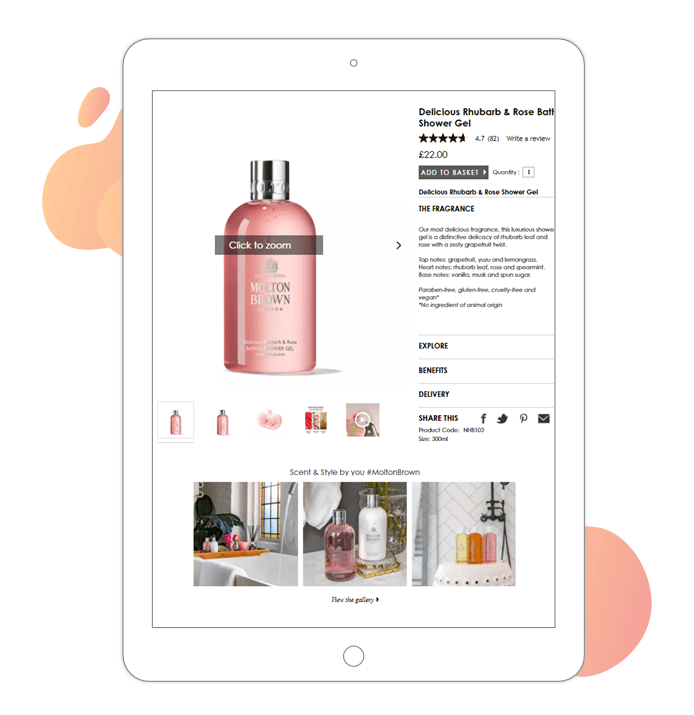
Source: moltonbrown.co.uk
2) Product recommendations
Just because a shopper has reached a product page and found an item that’s caught their eye, doesn’t mean it’s plain sailing all the way to the check out. Help make their purchase decision easy by recommending alternative products that might be better suited to their needs, or suggesting products that are frequently bought with the item they’re currently browsing.
With the ability to boost sales by up to 11%, product recommendations are a lucrative addition to any eCommerce website.
Here are two types of product recommendations to try out on your product pages.
Similar products
This type of recommendation suggests products that are similar to the item on the current page, based on the contents of product details such as name, description and tags. This tactic enables shoppers to see a wider range of products, helping them find the perfect one for them.
Chopard utilizes this type of recommendation on their product pages by suggesting different products in the same category as the current item being browsed.

Source: chopard.com
‘Frequently bought with this’
This type of recommendation suggests complimentary products based on what people who bought this product have ended up buying with it. Customers are reminded of accessories and complementary items that can help them get the most value out of the product they’re currently browsing.
Total Fishing Tackle displays items that work well with the product the shopper is currently browsing, inspiring them to add these extra items to their shopping cart.
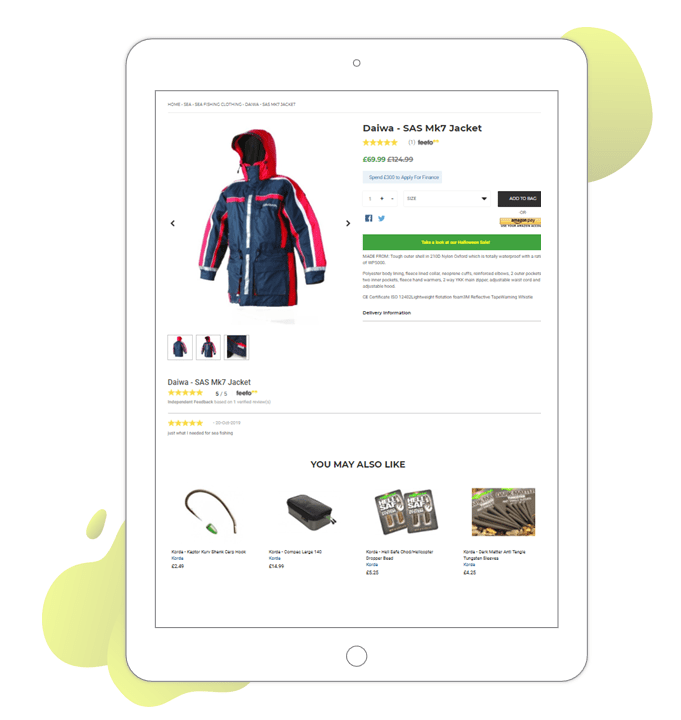
Source: total-fishing-tackle.com
3) Countdown timer
Countdown timers are an effective way to highlight important deadlines and create urgency.
The Entertainer uses a countdown timer to draw attention to their sale deadline, encouraging shoppers to make a purchase before prices increase.
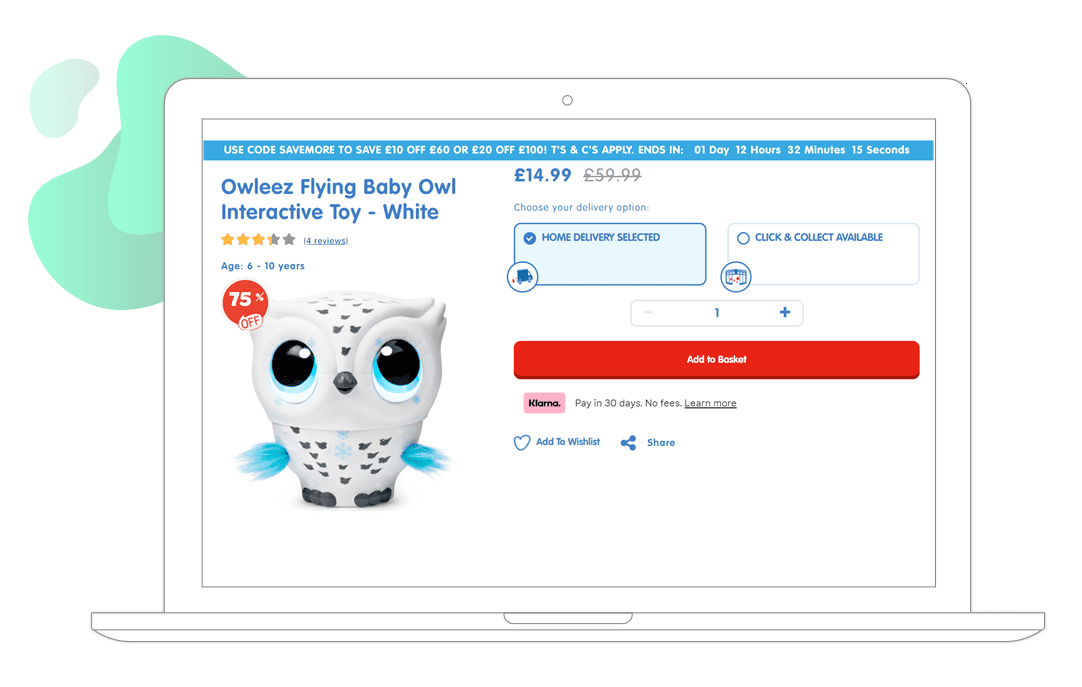
Source: thetoyshop.com
Beyond sale deadlines, countdown timers can also be a useful tactic to highlight next day or express delivery time cut offs, helping to speed up the purchase decision process. In fact, 35% of shoppers cite fast delivery as a priority when shopping online, so it pays to showcase your delivery options on your product pages.
Jewellerybox uses a countdown timer on their product pages to highlight the same day shipping deadline, encouraging shoppers to place their order quickly.

Source: jewellerybox.co.uk
Pavers uses a countdown timer to highlight their express delivery deadline.

Source; pavers.co.uk
4) Banners
By the time your shoppers reach a product page, they’re serious about making a purchase. Help make their decision easy and reduce the risk of abandoned browsing sessions by highlighting practical information, such as your returns policy and payment options. You can do this by using a banner or changing the text color – anything to make this information stand out.
Cooksongold uses a blue banner to highlight the free delivery available with the product the shopper is currently browsing. With 41% of shoppers citing free shipping as a priority when online shopping, it’s worth making any free delivery options clear.
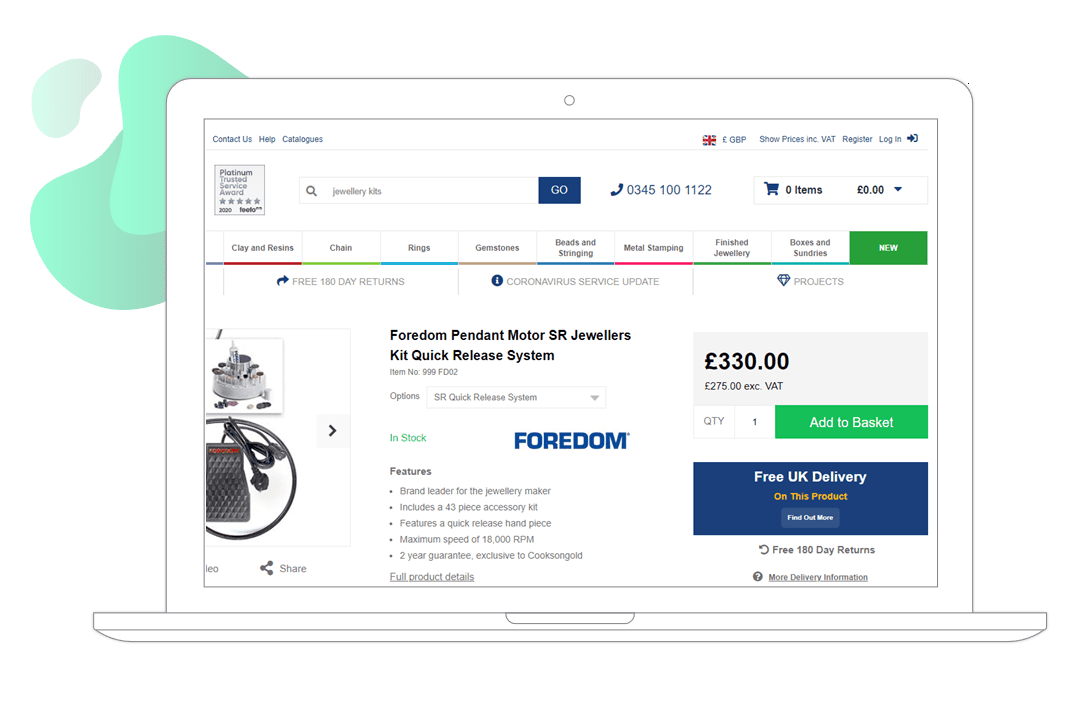
Source: cooksongold.com
Iconic Lights makes their customers aware of the option to pay in installments with their banner, highlighting how much the customer would need to pay each month.
![]()
Source: iconiclights.co.uk
The Diamond Store uses orange text to draw shoppers’ attention to a potential price rise.
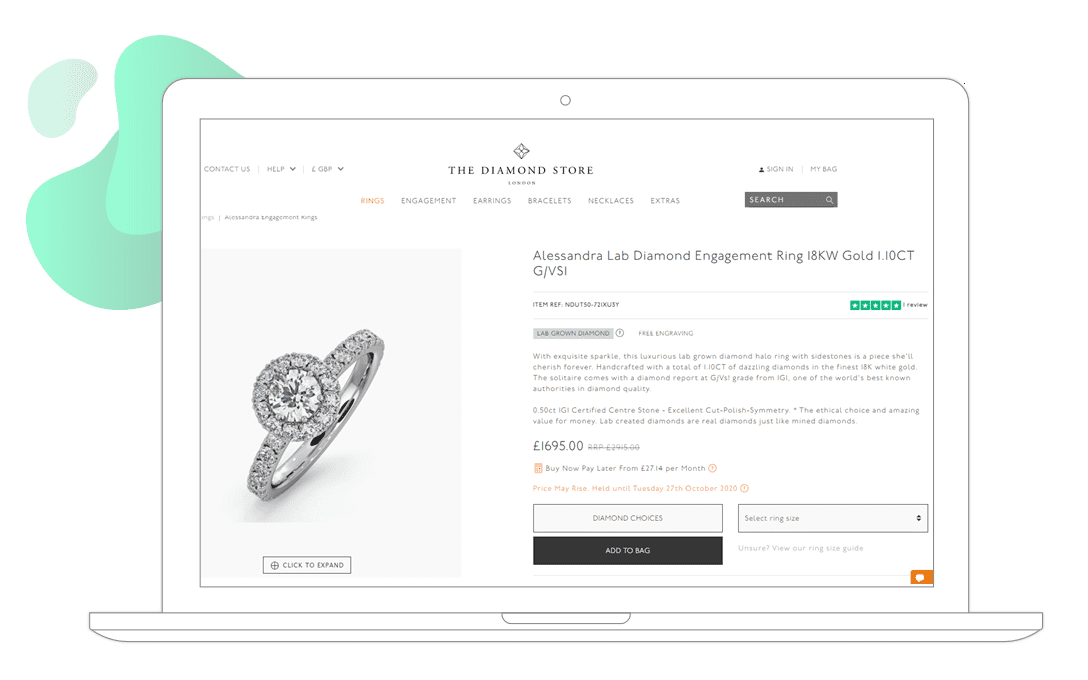
Source: thediamondstore.co.uk
The experience shoppers have on your product pages can make all the difference to your conversion rate. Use these four eCommerce product page best practices to make your customers’ purchase decision easy and provide them with an experience that keeps them coming back for more.



![Download The Ultimate Ecommerce CRO Lookbook [new visitors edition]](https://no-cache.hubspot.com/cta/default/483487/f95174aa-21e7-4455-99a9-12f3e849d3b1.png)



